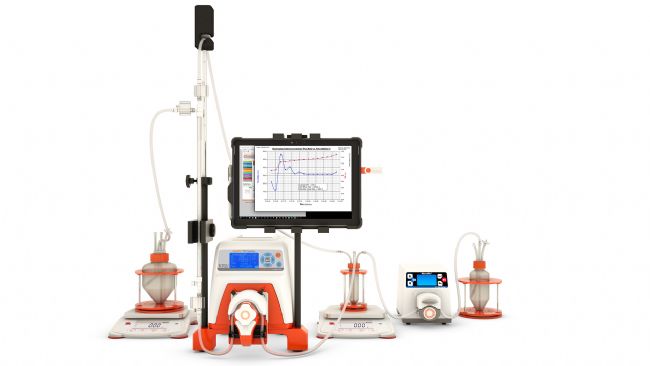Introduction:
Micro/nano latex particles used in in vitro diagnostic reagents typically require cleaning before or after coating of proteins (eg, antibodies, antigens, nucleic acids, or other macromolecules), particularly after passive adsorption or covalent coupling using excess antibody Excess free antibodies must be removed to ensure reliable test results and optimal sensitivity. This article outlines a rapid and efficient removal of free protein from latex particles by quantitative washing.
background:
The instantaneous membrane rejection is defined as:
Membrane interception percentage = r = 1-(Cf/Cr)
Wherein Cf is the concentration of the soluble component in the filtrate passing through the membrane, and Cr is the concentration of the solution refluxed from the outlet of the membrane module. If the membrane allows the solute to pass freely and the concentrations on both sides of the membrane are the same, the rejection percentage is zero. If the membrane completely traps a solute, the concentration in the filtrate is zero and the membrane rejection percentage is 1 or 100%. We assume that the membrane has a 100% rejection of latex particles and a percent interception of free protein is close to zero. Therefore, in a constant volume wash, the concentration of latex particles remains constant while free proteins permeate through the membrane. The concentration of free protein can be calculated by the following formula:
Concentration = Co· e – v (1-r)
Where v is the volume of the wash solution, r is the cut-off percentage of the solute, and Co is the initial concentration of the free protein. If the membrane rejection percentage of the protein is 0, 63.2% of the filtrate per filter passes through the filtrate.
Process conditions:
The initial treatment was 200 ml of 50 mM tris buffer, of which 20 ml (10%) of polystyrene latex particles (Seradyn lot 1057) having a diameter of 0.255 μm adsorbed 2.5% bovine serum albumin (BSA). The KrosFlo ® system was used with a single pore size 0.1 μm MiniKros ® Sampler module with a membrane surface area of ​​945 cm 2 . The pellet solution is circulated at a constant rate and the filtrate port is opened throughout the run. The initial injection pressure was 10 psig and remained constant. The 50 mM tris buffer solution was added to the process vessel at the same rate as the filtrate removal, thus maintaining a constant 200 ml treatment volume. The filtrate volume was collected 2,500 ml (12.5 times the sample volume) in 14 min.

KrosFlo Research 2 i [KR2 i ] Tangential Flow Filtration System
result:
The concentration of albumin in the filtrate was determined using the BCA method. The results show that there is only a slight deviation from the ideal case where the latex particle membrane rejection percentage is 1 and the protein membrane rejection percentage is 0. Free BSA was quickly cleared, exceeding 99.99%. No latex particles were detected in the filtrate, and the loss of adsorbed BSA was far from being detectable. The filtration efficiency remains relatively constant.
discuss:
Constant volume washing with MiniKros ® and larger KrosFlo ® filter assemblies is a fast and efficient alternative to cumbersome centrifugal/suspension operations. At the same time, it is also effective to remove the surfactant and water-soluble monomer before the covalent coupling reaction, which saves time and labor costs. Spectrum's hollow fiber modules offer many advantages over filter units that require repeated cleaning. The component is surfactant-free, ready to use, and protein retention is unaffected by cleaning and repeated use.

Scan the QR code and pay attention to the official version of the WeChat public account to get more application information!
Additives
Shandong YingLang Chemical Co.,Ltd , https://www.sdylhgtrade.com